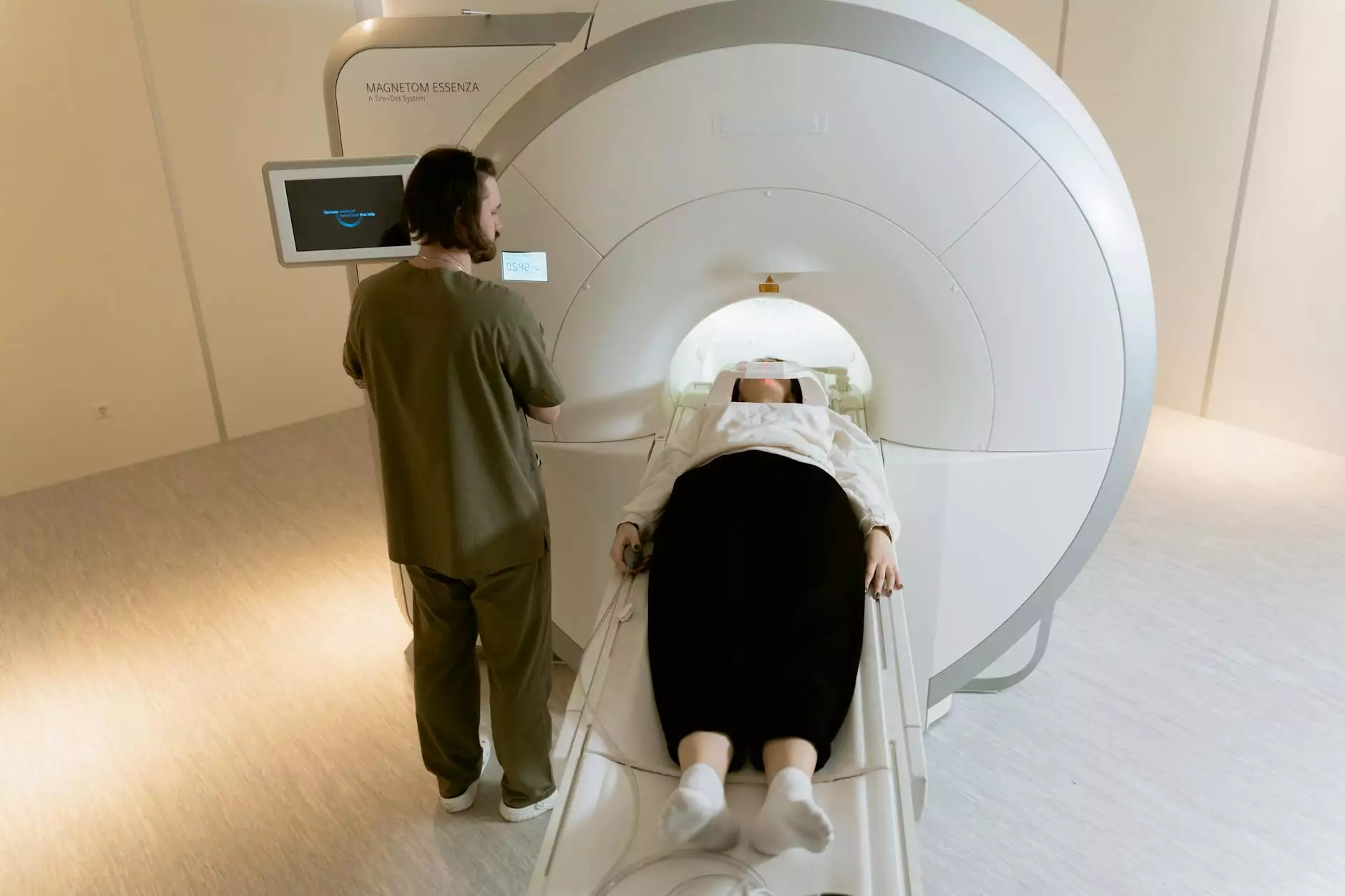Lung Cancer CT Scan: Understanding the Importance and Process

In the realm of health and medical diagnostics, the significance of a lung cancer CT scan cannot be overstated. As one of the most effective medical imaging technologies, a CT scan, or computed tomography scan, provides detailed images of the lungs, aiding in the early detection and diagnosis of lung cancer. In this article, we will delve into the intricacies of lung cancer CT scans, exploring their benefits, the procedures involved, and the overall significance of timely detection in the fight against lung cancer.
What is a Lung Cancer CT Scan?
A lung cancer CT scan is a diagnostic imaging test that utilizes X-ray technology and computer processing to create cross-sectional images of the lungs. This method is heavily relied upon by healthcare professionals to observe abnormalities in lung tissue, such as tumors or lesions, which might indicate cancerous growths. Unlike standard X-rays, a CT scan can provide multiple images from various angles, creating a comprehensive view of the lung structure and potential health concerns.
Why is a Lung Cancer CT Scan Important?
The importance of a lung cancer CT scan lies in its ability to:
- Detect Lung Cancer Early: Early detection plays a vital role in the successful treatment of lung cancer. CT scans can identify small tumors that may not be visible through other methods.
- Improve Diagnostic Accuracy: The detailed images provided by CT scans can help differentiate between benign and malignant growths, ensuring accurate diagnoses.
- Guide Treatment Plans: Detailed imaging allows physicians to develop targeted treatment plans tailored to the specific location and size of the tumor.
- Monitor Treatment Progress: CT scans can be used to monitor the effectiveness of ongoing treatment, helping doctors adjust strategies as necessary.
Who Should Consider Getting a Lung Cancer CT Scan?
Not everyone requires a lung cancer CT scan, but certain individuals are at greater risk and should consult their healthcare provider about the potential need for this imaging test. These include:
- Smokers: Individuals who have a history of smoking or are current smokers are at a higher risk of developing lung cancer.
- Age Factor: Adults aged 55 to 80 years, especially those with significant smoking history, should consider regular screenings.
- Family History: Those with a family history of lung cancer may also benefit from early screening.
- Exposure to Carcinogens: Individuals exposed to asbestos, radon, or other carcinogenic substances should be evaluated for lung cancer risk.
How is a Lung Cancer CT Scan Performed?
The process of undergoing a lung cancer CT scan is relatively straightforward and typically involves the following steps:
- Preparation: You may be advised to avoid eating for a few hours prior to the scan. Inform your doctor of any medications you are taking, as well as any allergies, particularly to contrast dye.
- Arrival: Upon arrival at the imaging facility, you will change into a hospital gown to ensure there are no obstructions in the area being scanned.
- Positioning: You will lie on a table that slides into the CT scanner. The technician will position you appropriately and may use straps or pillows to help keep you still.
- Scanning: The actual scanning process only takes a few minutes. You will need to hold your breath for short periods while the images are captured. Typically, the machine rotates around your body, taking multiple X-ray images.
- Post-Scan: After the scan, you can resume normal activities and eat as usual. The images will be reviewed by a radiologist who will provide a report to your doctor.
Understanding the Results of Your Lung Cancer CT Scan
Upon review, the results of your lung cancer CT scan will be available to your healthcare provider, who will interpret the findings. The results can typically include:
- Radiologist's Report: A detailed report will outline any findings, such as the presence, size, and location of lesions or tumors.
- Next Steps: Based on the results, your doctor may recommend further tests, treatments, or follow-up scans, depending on the detected anomalies.
- Clearance and Follow-Up: If no concerning issues are found, you may not need additional follow-up for a certain period; however, ongoing screening may still be recommended based on risk factors.
Benefits of Lung Cancer CT Scans over Other Imaging Tests
The lung cancer CT scan has several advantages when compared to standard X-rays or other imaging techniques:
- Higher Resolution: CT scans produce images with greater clarity, allowing for a more accurate assessment.
- Three-Dimensional Imaging: 3D reconstruction of images helps in visualizing the precise anatomy of the lungs.
- Faster Results: The rapid scan time translates to quicker diagnosis and interventions.
- Less Overlap: Unlike X-rays, there is minimal overlap of structures in CT images, enhancing the diagnostic accuracy.
Risks and Considerations of a Lung Cancer CT Scan
While a lung cancer CT scan is generally safe, it's essential to be aware of some risks involved:
- Radiation Exposure: CT scans involve exposure to radiation, although the levels are typically low and considered safe for diagnostic purposes.
- Contrast Reactions: If a contrast dye is used, there may be a risk of allergic reactions. Always disclose any allergies to your healthcare provider.
- False Positives: In some cases, benign conditions may be misidentified as cancers, leading to unnecessary anxiety and further tests.
Cutting-Edge Technologies in Lung Cancer Diagnostics
The field of radiology is continuously evolving. In addition to traditional CT scans, newer modalities such as low-dose CT scans specifically aimed at lung cancer screening have become increasingly popular, offering major benefits:
- Reduced Radiation Exposure: Low-dose scans utilize less radiation while maintaining diagnostic image quality.
- Enhanced Detection Rates: These scans have demonstrated improved detection rates for early-stage lung cancer in high-risk groups.
- AI Integration: Artificial intelligence is being integrated into diagnostic processes, aiding in identifying and classifying abnormalities more efficiently and accurately.
Conclusion: The Role of Lung Cancer CT Scans in Prevention and Care
In conclusion, the lung cancer CT scan is a crucial tool in the detection and management of lung cancer. For individuals at risk, early screening can be a life-saving measure. At HelloPhysio, we advocate for proactive health measures and ensure that individuals are informed and supported in making the best choices regarding their health. Regular check-ups, awareness of symptoms, and utilizing advanced diagnostic technologies like CT scans contribute to a greater likelihood of successful outcomes in lung cancer treatment. If you or a loved one might be at risk, consult with a healthcare professional today about the benefits of lung cancer screening and how it can fit into your overall health strategy.









